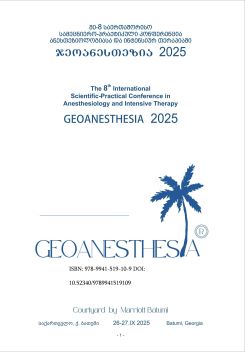UNUSUAL PRESENTATION OF MEASLES IN GEORGIA
DOI:
https://doi.org/10.52340/9789941519109.08Keywords:
Atypical measles, viral myocarditis, diagnostic challenge, elevated troponin, measles without rash, abdominal pain in measlesAbstract
Measles is traditionally recognized as a childhood disease marked by fever, cough, conjunctivitis, and a characteristic rash. However, its re-emergence in adult populations, particularly those with incomplete immunity, has led to a rise in atypical presentations. We report a diagnostically challenging case of a 28-year-old male who presented with severe epigastric abdominal pain, high-grade fever, and markedly elevated cardiac troponin I levels, but no rash or upper respiratory symptoms. The initial clinical picture mimicked acute abdomen and myocarditis, prompting an extensive workup for surgical, infectious, and cardiologic etiologies.
The patient reported a sudden onset of unbearable abdominal pain and vomiting the day before admission. He was febrile (39.9°C), tachycardic, and visibly distressed, but hemodynamically stable and without respiratory compromise. Physical examination revealed hypoactive bowel sounds but no peritoneal signs. Initial investigations, including ECG, chest X-ray, abdominal ultrasound, and contrast-enhanced abdominal-pelvic CT, failed to identify an underlying pathology. Laboratory tests showed thrombocytopenia, elevated C-reactive protein, and significantly increased troponin I levels. Notably, the liver function tests were also increased, and renal function and urinalysis were normal. Cardiology consultation excluded acute coronary syndrome and attributed troponin elevation to possible viral myocarditis. Despite symptomatic treatment with antipyretic and analgesic therapies, the patient’s symptoms remained severe, raising concerns for a systemic infectious process with multiorgan involvement.
As no hallmark features of a known infection were visible, several etiologies were pursued. Viral panel testing for COVID-19 and influenza was negative. However, in light of a concurrent local outbreak and the patient's childhood vaccination history being uncertain, measles IgM serology was requested. It returned strongly positive, confirming acute measles infection. Notably, the patient never developed a rash, Koplik spots, or respiratory symptoms during the entire course of illness. He was promptly transferred to a negative-pressure room, where he was isolated and monitored continuously. Over the next 48 hours, the patient’s condition improved markedly. His fever subsided, abdominal pain resolved with opioid analgesia, and cardiac enzyme levels returned to baseline. He was discharged in a stable condition five days later with an arranged follow-up.
This case illustrates a rare and diagnostically confounding presentation of measles in a young adult. The absence of classical clinical features delayed suspicion for measles, highlighting the importance of considering atypical presentations, especially during outbreaks. A growing body of evidence indicates that adult measles infections, particularly in partially immune individuals, can manifest predominantly with gastrointestinal and cardiac symptoms. Measles myocarditis, although uncommon, has been described in similar cases and may present solely with troponin elevation without overt cardiac symptoms or ECG changes.
In conclusion, clinicians should maintain a high index of suspicion for measles in adults presenting with systemic illness of unclear origin, even in the absence of rash. This case reinforces the need for early serological testing and isolation protocols to prevent missed diagnoses, delayed treatment, and potential outbreaks in healthcare settings.





